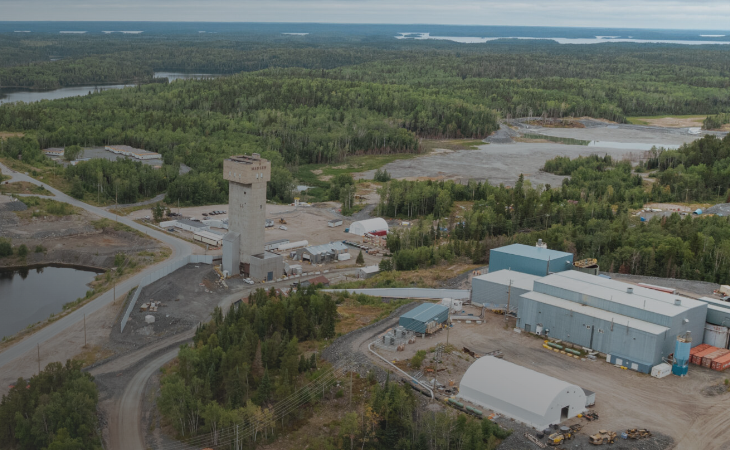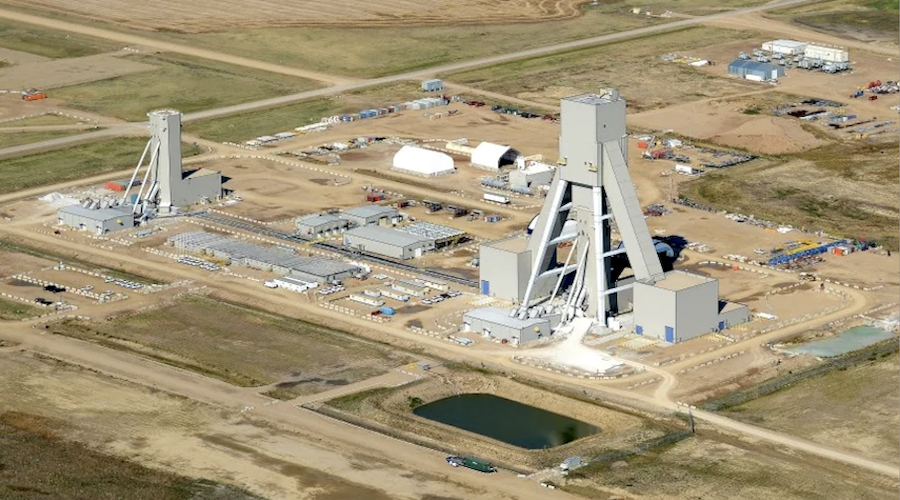Nemaska Lithium’s (TSXV: NMX) Whabouchi deposit has always had the grade, but now it’s looking to marry nature’s gift with a patented extraction process that could offer a considerable market advantage.
Whabouchi, which sits roughly 300-km from Chibougamau in Quebec, is North America’s richest deposit with an average grade of 1.49% Li2O. It is also the second richest deposit in the world taking a back seat only to Talison Lithium’s Greenbushes project in Western Australia.
And while Talison’s eye-catching average grade of 2.8%, along with its considerable tonnage, made it an early takeover target when the lithium space first started to heat up, Nemaska believes that its deposit, when combined with its unique process, will give it a market advantage.
That process still needs to be firmed up in a 1,000 hour test as part of its bankable feasibility study due out at the beginning of next year, but early results look promising as both experts inside and outside of the company have confirmed the process works.
The big advantage to the process is reduced costs and higher purity lithium. And if that sounds too good to be true, investors can be reassured by the fact that the process itself is not all that complex.
The key to Nemaska stumbling upon the process was a realization that lithium should behave like sodium in an electrolysis environment. That is key because the membrane electrolysis technology Nemaska is testing for lithium is already an established technology in the production of sodium chloride.
More specifically, the process starts with lithium sulphates and removes all the impurities in the solution right down to trace levels. All that is left at that point is a high purity lithium sulphate that then travels into a membrane electrolysis cell stack. Once in the cell stack, the lithium sulphate separates at the anode and at the cathode, leaving a high purity lithium hydroxide solution.
The solution is then crystallized into a powder form making it cheaper to ship, or it can be bubbled with carbon dioxide to produce lithium carbonate. Both the carbonate and the hydroxide are 99.99% pure.
The ability to produce lithium hydroxide has the company particularly excited. That is because demand for lithium hydroxide could grow by 30% per year over the next seven years according to signumBox, a Chilean-based market intelligence firm.
The expected surge in demand for lithium hydroxide has to do with new battery cathodes, such as LFP (lithium-iron-phosphate), which use lithium hydroxide over lithium carbonate because of its better power density, longer lifecycle, and enhanced safety features.
Those qualities help make lithium hydroxide a premium product, and the 99.99% purity that Nemaska plans to produce, is battery grade.
Outside of the high purity and the hydroxide production, the other key advantage of the process over the traditional methodology is that it doesn’t require the use of soda ash, which is typically added to a lithium sulphate solution to precipitate the lithium carbonate. That process requires the removal of impurities through various polishing stages, which takes time and money.
And while Nemaska is working on proving the economic viability of its process, there are still those skeptical of all hard rock lithium mining when compared to the traditionally lower cost brine production that comes largely out of South America.
However, with the success of Talison and Canada Lithium (TSX: CLQ) getting its Quebec Lithium project into production, there has been a recent shift in production towards the hard rock side.
Whereas in 2009 brines accounted for 56% of production outside of China with hard rock making up just 21%, three years later hard rock accounted for 35% of production outside of China with Brines dipping to 45%. That shift is largely attributable to Talison, which has ramped up production over that time.
Talison was acquired by Tianqi Lithium, a Chinese group that is the largest battery material provider in China and had been Talison’s largest customer.
Tianqi also owns 16.5% of Nemaska, although that stake could be diluted as Nemaska recently announced that it was issuing 20.8 million units (made up of a stock and a half warrant) in an effort to raise $2.5 million. It expects to close the deal at the end of the month.
Building the mine, however, will cost considerably more than that. A preliminary economic assessment on Whabouchi estimated it would cost $454 million to build the mine — capital that Nemaska will look to raise in both the debt and equity markets in the future. Being in a remote part of Quebec will likely help in those efforts, as the Quebec government often finds ways to finance projects it believes in.
And if investors look at the closest comparables for Nemaska —Talison and Canada Lithium — the investment case does appear strong.
Whabouchi has 19.6 million tonnes of measured and indicated resources grading 1.49% Li2O. The Quebec Lithium deposit has 17.1 million tonnes grading 0.94%, and Greenbushes has 61.5 million tonnes grading 2.8%.
That all means that on a market cap per tonne of contained lithium oxide basis, Nemaska’s lithium is being valued at just $54 per tonne, while Canada Lithium’s is being valued at $1,072 per tonne, and Tianqi’s $848 million acquisition of Talison valued it at $493 per tonne. Of course, both Talison and Canada Lithium have gone further down the road of de-risking those tonnes with operating mines, something that Nemaska believes it is well on the way to accomplishing.
To go to the Northern Miner website, click here





Comments